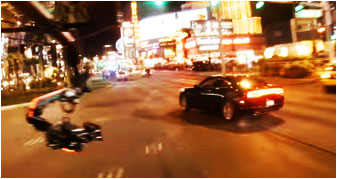
What Are Content Warnings?
At times, producers and/or distributors may believe that certain scenes in a film, music video, television episode, or video game contains content that will offend, traumatize, or otherwise cause harm or discomfort to some viewers. In such cases, content warnings are often given in conjunction with a content rating system that specifies the type of audience the film or production is suitable for, such as M for mature audiences.
Content warnings are typically selected from a list of general warnings, such as:
- “The following program contains material that may be disturbing. Viewer discretion is advised.”
- “This program contains violent content which may be too intense for some viewers. Viewer discretion is advised.”
- “The following program contains mature situations/themes and is intended for an older youth audience. Viewer discretion is advised.”
- “This program is rated TV-MA and is intended for mature audiences.”
- “The opinions expressed here do not necessarily reflect the views of (the network/production company). Viewer discretion is advised.”
For more examples of content warnings, visit: https://tvtropes.org/pmwiki/pmwiki.php/Main/ContentWarnings
What Are Trigger Warnings?
Trigger warnings are similar to content warnings, but they are typically in reference to content that is extremely upsetting in nature and can trigger a negative, unwanted response in certain audience members, such as trauma survivors, individuals with common phobias, and viewers with visual sensitivities.
For viewers with an extreme phobia and viewers who have survived a traumatic experience (physical, psychological or emotional), trigger warnings are extremely helpful if the material shown may cause them to be re-traumatized and have a panic attack, post-traumatic stress disorder (PTSD) flashback, or other distressing response.
When it comes to medical issues that can be triggered by the visual nature of a film, television episode, or other form of media, content warnings are essential in order to prevent severe harm to a viewer’s health. Flashing images, lights, patterns, and other screen effects can trigger seizures in people with photosensitive epilepsy. Incredibles 2 is an example of one film that needed a disclaimer to warn audience members that the animated movie contained scenes that could trigger those with photosensitive epilepsy.
Content and trigger warnings are intended to be helpful guides that allow viewers to make an informed decision on whether or not they want to continue watching a film or program.
If you are looking for industry professionals to help you review your content and create appropriate content and trigger warnings, check out our online Nevada Production Directory to find experienced Nevada production crew or drop by our office and pick up a free printed directory!
If you offer production and film-related services in Nevada and are not yet listed in our Production Directory, you can learn more about how to sign up for the NPD here.
Featured Business
Advertisement
Disclaimer: The information contained in this article is deemed to be accurate and true to the best of our knowledge. All data and information provided on this site is for informational/entertainment purposes only. If there are any inaccuracies, you may submit corrections and sources by visiting our Contact page. Nevada Film Office makes no representations as to accuracy, completeness, currentness, suitability, or validity of any information on this site & will not be liable for any errors, omissions, or delays in this information or any losses, injuries, or damages arising from its display or use. All information is provided on an as-is basis. We do not sponsor or endorse anyone in our posts nor do we receive compensation of any kind in exchange for providing information about specific websites or resources unless otherwise noted, so please check for references, business licenses or credentials as you feel necessary.





Connect With Us
Proud Members of: